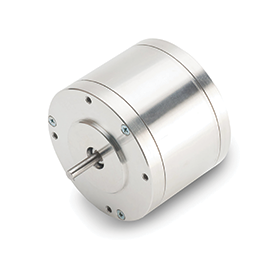

Engineers are increasingly turning to stepper motors for a simple and cost-effective positioning solution. However, due to the design of these motors and the way they are driven, there is an inherent risk of resonance under certain operating conditions. This can manifest as vibrations, which impacts on the synchronisation between the command and the actual rotor position – ultimately affecting accuracy.
Portescap application engineer, Daniel Muller, discusses the importance of preventative measures to avoid the resonance that can lead to these problems.
Stepper motors are a popular option in a host of positioning applications, as they can be simply driven, step-by-step, without the need for an encoder or additional device to provide position feedback information.
If we consider the operating mechanism more closely, however, we can see the potential for problems. If the rotor moves slightly ahead of the target position the motor will develop a negative torque to pull the rotor back to the target position. On the other hand, when the rotor has not yet reached the target position, a positive torque will draw the rotor towards it. In these conditions, oscillation can occur.
In practice, if the rotor speed and/or the inertia from the load causes overshoot from the target position, the rotor will start oscillating around the target position, with a natural frequency that is a factor of the holding torque, the number of poles and the total moment of inertia. The magnitude of the oscillation will reduce over time with the inherent damping of the system, but if the oscillation is not over before the next step is commanded there is a risk of resonance, with the mechanical system responding with oscillations of greater amplitude.
The problems that can be caused by resonance can lead to a loss of steps, changes in direction of rotation and general erratic motion.
Measures to prevent resonance
Resonance typically occurs when the commutation frequency is close to the mechanical system’s natural frequency of vibration. It is not always possible to keep the commutation frequency away from the resonance frequency and thus avoid it. It may be an option instead to shift the system’s natural frequency either up or down. This can be done by working on two of the parameters that affect it: holding torque and the total inertia of the system.
Holding torque depends on the rated current of the motor. Using a higher current to increase the holding torque has the unwanted effects of increasing joule losses, leading to increased coil temperature. However, it is possible to use a lower current to shift the natural frequency down if the lower torque still meets the application requirements.
Looking at inertia, the mechanical system’s moment of inertia is the sum of the motor’s rotor inertia plus the load inertia. The design engineer could select a motor with different specifications to change to the rotor inertia. Or it may be possible to adjust the load inertia to shift the natural frequency up or down, if this does not impact on the motor’s performance in the application.
Another measure to prevent resonance is to operate the motor in microstepping mode rather than driving the motor with full steps. The smaller step angle requires less energy to move from one stable position to the next, so the resulting overshoot and magnitude of oscillation are smaller. In addition, microstepping generally offers lower noise, less vibration and a smoother operation.
The motor system’s inherent damping will steadily decrease the magnitude of oscillation in many applications and prevent resonance occurring. So where resonance is a problem, can we increase damping to eliminate the problem? The answer is yes and there are a number of mechanisms available to do so.
Mechanical friction provides a braking torque that is constant and independent of speed. Increasing load friction or motor bearing friction could increase damping in some applications, although because it acts on the motor at all speeds it is important to ensure that the motor’s performance is not compromised.
A better option is generally to add viscous friction. This also provides a braking torque, but its magnitude is dependent on motor speed. Thus, it provides strong braking while the oscillation amplitude is high and only very light braking once the oscillation is smaller.
The back-EMF voltage induced in the coil provides a current that also creates a braking torque that will dampen oscillation. The effectiveness depends on the motor drive – chopper drivers typically do not enable this type of damping since the current is kept constant despite back-EMF variations.

© Technews Publishing (Pty) Ltd | All Rights Reserved